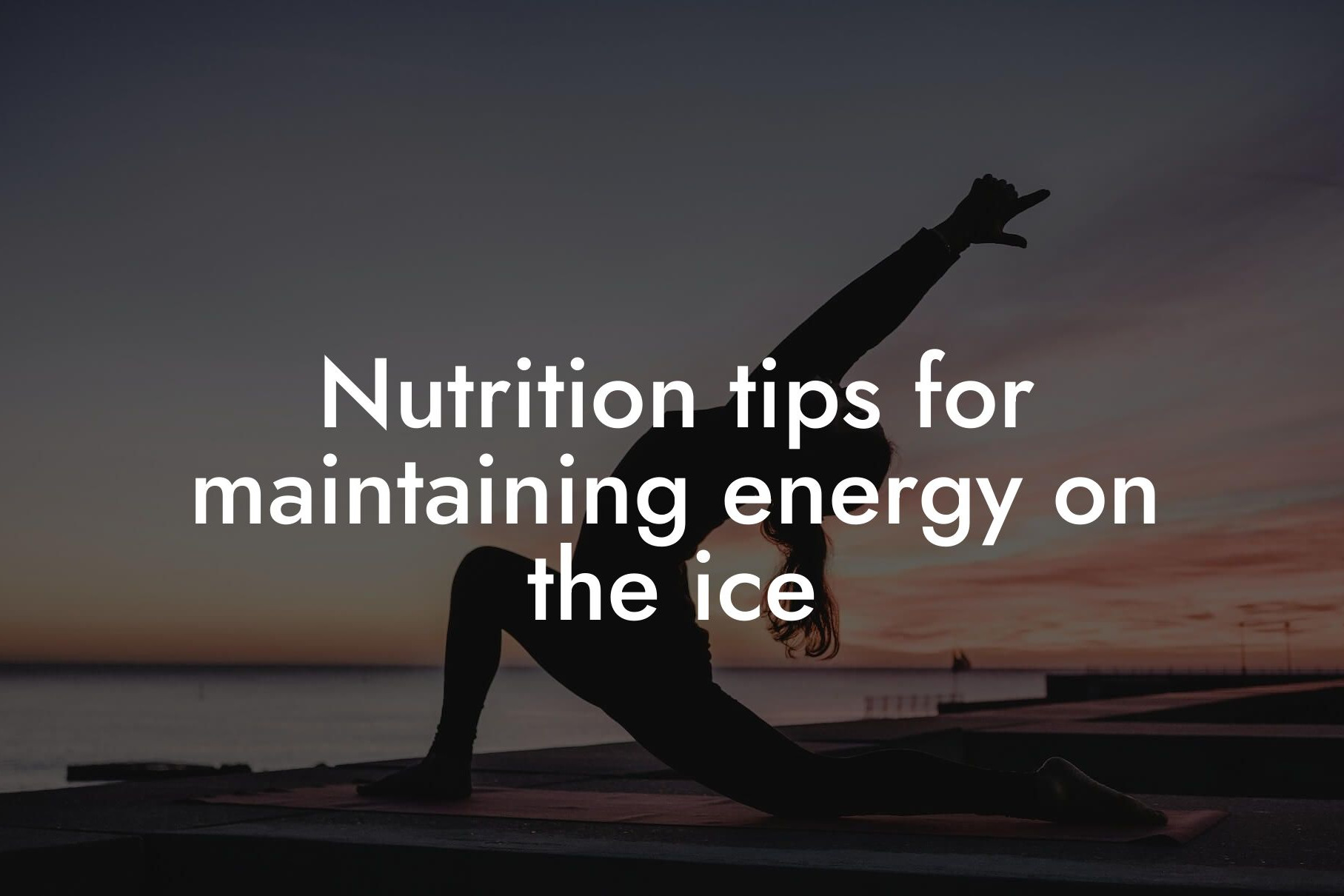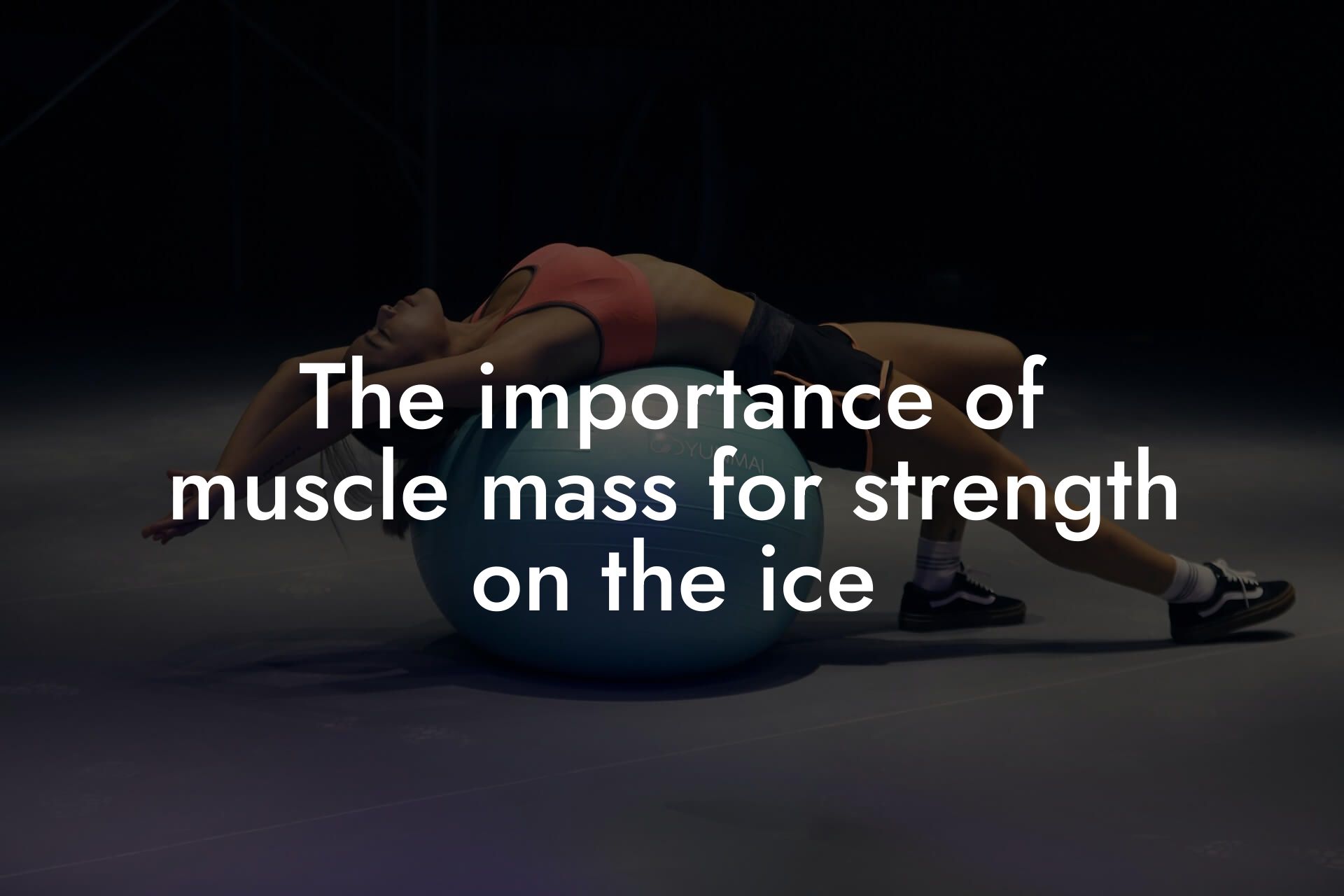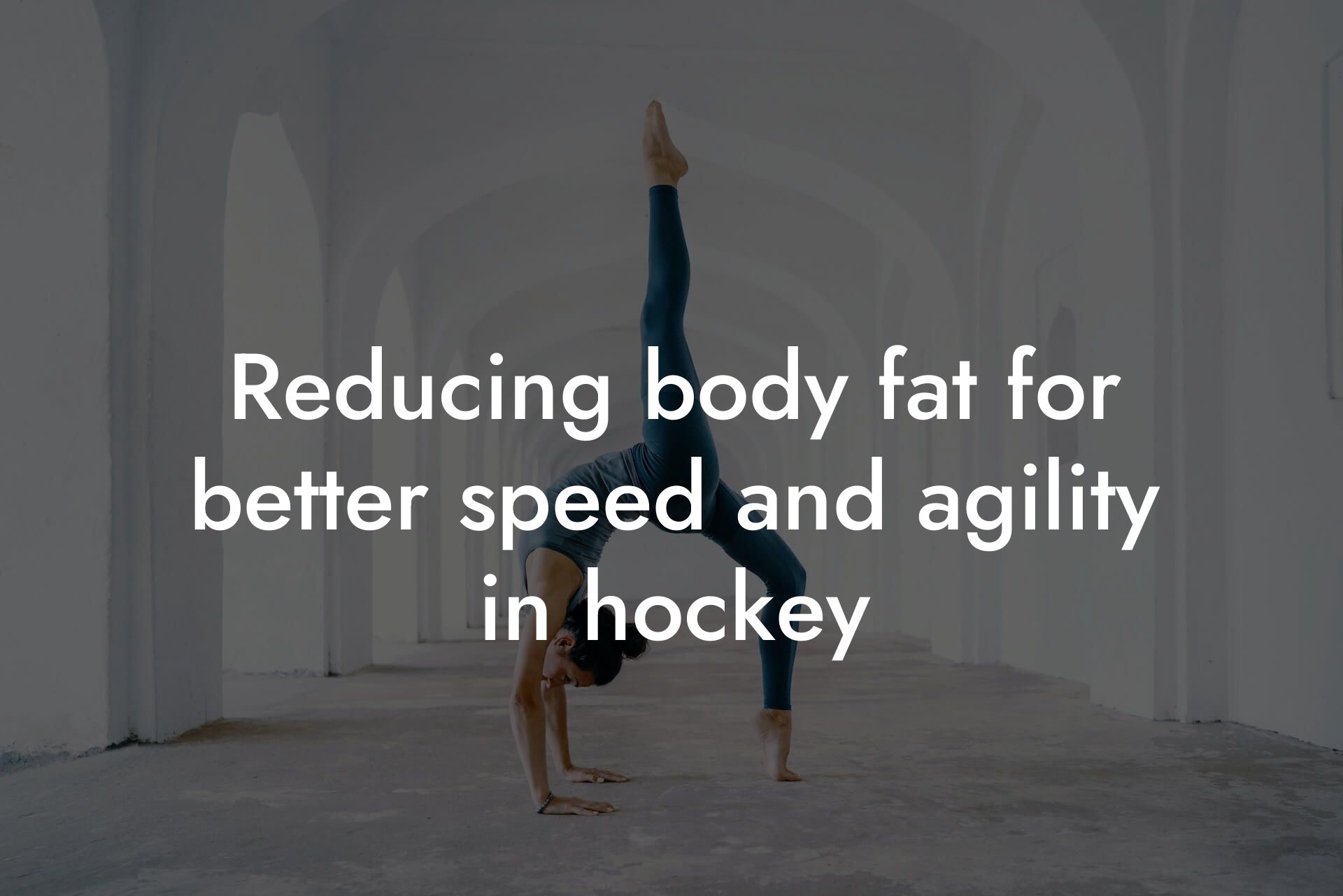As a hockey athlete, you know that the physical demands of the game can be intense. From the rapid changes of direction to the high-speed collisions, hockey players put their bodies through a lot. And when the final buzzer sounds, the real work begins – recovery. Proper recovery techniques are essential for hockey athletes to repair, rebuild, and come back stronger for the next game. In this article, we'll explore the best recovery techniques for hockey athletes after games.
Table of Contents
The Importance of Recovery in Hockey
Recovery is often overlooked in hockey, but it's a critical component of a player's overall performance. When you don't allow your body time to recover, you're putting yourself at risk for injury, fatigue, and decreased performance. In fact, studies have shown that inadequate recovery can lead to a 10-15% decrease in athletic performance. By prioritizing recovery, hockey athletes can improve their speed, strength, agility, and endurance, giving them a competitive edge on the ice.
Immediate Post-Game Recovery (0-30 minutes)
The first 30 minutes after a game are crucial for recovery. During this time, your body is in a state of heightened inflammation, and your muscles are most receptive to nutrient uptake. Here are some techniques to implement immediately after the game:
1. Hydration: Drink 16-20 ounces of water or a sports drink to replenish lost fluids and electrolytes.
2. Stretching: Perform gentle, static stretches to help reduce muscle soreness and improve flexibility. Focus on major muscle groups like the legs, hips, and lower back.
3. Foam Rolling: Use a foam roller to self-myofascial release tight muscles, particularly in the legs and glutes.
Short-Term Recovery (30 minutes-2 hours)
After the initial 30-minute window, you can move on to more advanced recovery techniques. Here are some methods to incorporate into your routine:
1. Contrast Showers: Alternate between hot and cold water to reduce inflammation and promote blood flow.
2. Compression Garments: Wear compression clothing, such as tights or sleeves, to improve circulation and reduce muscle soreness.
3. Electrolyte Replenishment: Consume electrolyte-rich foods or supplements, like bananas or coconut water, to replenish lost electrolytes.
Long-Term Recovery (2-24 hours)
As the hours pass, your body continues to repair and rebuild. Here are some techniques to aid in long-term recovery:
1. Active Recovery: Engage in low-intensity aerobic activities, such as cycling or swimming, to promote blood flow and aid in the removal of waste products.
2. Massage Therapy: Receive a massage to promote relaxation, reduce muscle tension, and improve circulation.
3. Sleep and Relaxation: Prioritize sleep and relaxation to allow your body to fully recover. Aim for 7-9 hours of sleep and engage in relaxation techniques, like meditation or deep breathing, to reduce stress and anxiety.
Nutrition for Recovery
Nutrition plays a critical role in recovery. A well-balanced meal or snack consumed within 30-60 minutes after a game can help promote muscle repair and replenish energy stores. Here are some key nutrients to focus on:
1. Protein: Consume 15-20 grams of protein to aid in muscle repair and rebuilding.
2. Carbohydrates: Focus on complex carbohydrates, like whole grains and fruits, to replenish energy stores.
3. Healthy Fats: Include sources of healthy fats, like nuts and avocados, to support hormone production and inflammation reduction.
Technology-Assisted Recovery
In addition to traditional recovery techniques, technology can play a role in aiding hockey athletes. Here are some innovative methods to consider:
1. NormaTec Boots: Use compression boots to improve circulation and reduce muscle soreness.
2. Cryotherapy: Expose your body to cold temperatures to reduce inflammation and promote recovery.
3. DEXA Scanning: Utilize DEXA scanning to track body composition, bone density, and other key metrics to optimize recovery and training.
Individualized Recovery Plans
Every hockey athlete is unique, and what works for one player may not work for another. It's essential to work with a coach, trainer, or nutritionist to develop an individualized recovery plan tailored to your specific needs and goals.
By incorporating these recovery techniques into your routine, you'll be able to repair, rebuild, and come back stronger for the next game. Remember, recovery is not a one-size-fits-all approach – it's essential to experiment and find what works best for you.
Recovery is a critical component of a hockey athlete's training program. By prioritizing recovery, you'll be able to improve your performance, reduce the risk of injury, and gain a competitive edge on the ice. Remember to stay hydrated, stretch, and prioritize nutrition, and don't be afraid to incorporate technology-assisted recovery methods into your routine. With the right recovery techniques, you'll be able to take your game to the next level.
Frequently Asked Questions
What are the most common recovery techniques used by hockey athletes?
Common recovery techniques used by hockey athletes include foam rolling, stretching, self-myofascial release, compression garments, and cryotherapy. These techniques help reduce muscle soreness, improve flexibility, and enhance overall physical performance.
Why is recovery important for hockey athletes?
Recovery is crucial for hockey athletes as it allows their bodies to repair and adapt to the physical demands of the sport. Proper recovery techniques can help prevent injuries, reduce muscle soreness, and improve overall performance on the ice.
How soon after a game should I start my recovery routine?
It's recommended to start your recovery routine within 30-60 minutes after a game. This allows your body to begin the repair process and reduce muscle soreness before it sets in.
What are some nutrition tips for hockey athletes during recovery?
During recovery, hockey athletes should focus on consuming a balanced diet that includes protein-rich foods, complex carbohydrates, and healthy fats. Aim to consume a meal or snack with a mix of these macronutrients within 30-60 minutes after a game.
How does compression clothing aid in recovery?
Compression clothing, such as tights or sleeves, provides graduated compression that helps improve blood flow and reduce swelling in the affected areas. This can aid in the removal of waste products, such as lactic acid, that can contribute to muscle soreness.
What is cryotherapy, and how does it aid in recovery?
Cryotherapy, also known as ice baths or cold water immersion, involves submerging the body in cold water to reduce inflammation and muscle soreness. This technique can help reduce muscle spasms, improve recovery, and enhance overall physical performance.
Can I use heat therapy during recovery?
Yes, heat therapy can be used during recovery, but it's typically recommended for chronic injuries or soreness rather than acute injuries. Heat therapy can help increase blood flow and reduce muscle spasms, but it's essential to use it in moderation and avoid overheating.
How does self-myofascial release aid in recovery?
Self-myofascial release, using tools such as foam rollers or lacrosse balls, helps break up adhesions and scar tissue in the muscles. This can aid in reducing muscle soreness, improving flexibility, and enhancing overall physical performance.
What are some common mistakes hockey athletes make during recovery?
Common mistakes hockey athletes make during recovery include not starting their recovery routine soon enough, not consuming adequate nutrition, and neglecting to stretch or foam roll. These mistakes can lead to prolonged muscle soreness, decreased performance, and increased risk of injury.
How can I incorporate stretching into my recovery routine?
Incorporating stretching into your recovery routine can be as simple as dedicating 10-15 minutes to static stretches after a game or practice. Focus on stretching major muscle groups, such as the hamstrings, quadriceps, and hip flexors.
What is the importance of sleep during recovery?
Sleep is essential during recovery as it allows your body to repair and adapt to the physical demands of the sport. Aim for 7-9 hours of sleep each night to help your body recover and adapt.
Can I use recovery techniques during the off-season?
Yes, recovery techniques can be used during the off-season to maintain physical fitness and prepare for the upcoming season. This can include incorporating strength training, cardio, and flexibility exercises into your routine.
How does foam rolling aid in recovery?
Foam rolling helps break up adhesions and scar tissue in the muscles, reducing muscle soreness and improving flexibility. This can aid in enhancing overall physical performance and reducing the risk of injury.
What are some recovery techniques I can use during travel?
During travel, hockey athletes can use recovery techniques such as stretching, foam rolling, and self-myofascial release to aid in recovery. These techniques can be done in a hotel room or on the bus, making them convenient for athletes on-the-go.
How does nutrition impact recovery?
Nutrition plays a critical role in recovery as it provides the necessary building blocks for your body to repair and adapt. A balanced diet that includes protein, complex carbohydrates, and healthy fats can aid in reducing muscle soreness and enhancing overall physical performance.
What are some common injuries that can be prevented with proper recovery techniques?
Common injuries that can be prevented with proper recovery techniques include muscle strains, tendonitis, and overuse injuries. By incorporating recovery techniques into your routine, you can reduce the risk of these injuries and maintain optimal physical performance.
Can I use recovery techniques if I'm not a professional hockey athlete?
Absolutely! Recovery techniques can be used by hockey athletes of all levels, from recreational to professional. By incorporating recovery techniques into your routine, you can improve your overall physical performance and reduce the risk of injury.
How does hydration impact recovery?
Hydration is essential during recovery as it helps your body replenish lost fluids and electrolytes. Aim to consume at least 8-10 glasses of water per day, and consider incorporating electrolyte-rich drinks or supplements to aid in hydration.
What are some signs that I need to adjust my recovery routine?
Signs that you need to adjust your recovery routine include persistent muscle soreness, decreased performance, or increased risk of injury. If you're experiencing any of these signs, consider consulting with a sports medicine professional or adjusting your recovery routine to better meet your needs.
Can I use recovery techniques in conjunction with other forms of exercise?
Yes, recovery techniques can be used in conjunction with other forms of exercise, such as strength training or cardio. By incorporating recovery techniques into your routine, you can enhance overall physical performance and reduce the risk of injury.
How does stress impact recovery?
Stress can negatively impact recovery by increasing cortisol levels, which can lead to muscle breakdown and decreased physical performance. By managing stress through techniques such as meditation or deep breathing, you can aid in the recovery process and enhance overall physical performance.
What are some recovery techniques that can be used in conjunction with physical therapy?
Recovery techniques that can be used in conjunction with physical therapy include stretching, foam rolling, and self-myofascial release. These techniques can aid in the rehabilitation process and enhance overall physical performance.
Can I use recovery techniques to aid in injury rehabilitation?
Yes, recovery techniques can be used to aid in injury rehabilitation by reducing muscle soreness, improving flexibility, and enhancing overall physical performance. By incorporating recovery techniques into your rehabilitation routine, you can aid in the recovery process and reduce the risk of re-injury.
How does age impact recovery?
Age can impact recovery as older athletes may require more time to recover from intense physical activity. By incorporating recovery techniques into your routine, you can aid in the recovery process and maintain optimal physical performance, regardless of age.
Here are some related articles you might love...
- Nutrition tips for maintaining energy on the ice
- The importance of muscle mass for strength on the ice
- Reducing body fat for better speed and agility in hockey
- Off-season training strategies for amateur hockey players
- How body composition affects hockey performance
- Strength and conditioning programs for hockey players
- The benefits of DEXA scans for amateur hockey players
- Balancing strength, speed, and agility in hockey
- Bone density and injury prevention in hockey
Zak Faulkner
Zak Faulkner is a leading authority in the realm of physical health and body composition analysis, with over 15 years of experience helping professionals optimise their fitness and well-being. As one the experts behind Tano Performance Group, Zak has dedicated his career to providing in-depth, science-backed insights that empower clients to elevate their physical performance and overall health.
With extensive knowledge of DEXA technology, Zak specializes in delivering comprehensive body assessments that offer precise data on body fat, muscle mass, bone density, and overall physique. His expertise enables individuals to make informed decisions and achieve their fitness goals with accuracy and confidence. Zak’s approach is rooted in a deep understanding of human physiology, combined with a passion for helping clients unlock their full potential through personalised strategies.
Over the years, Zak has earned a reputation for his commitment to excellence, precision, and client-focused service. His guidance is trusted by top professionals who demand the best when it comes to their health. Whether advising on fitness programs, nutritional strategies, or long-term wellness plans, Zak Faulkner’s insights are a valuable resource for anyone serious about taking their health and fitness to the next level.
At Tano Performance Group, Zak continues to lead our Content Team revolutionising how professionals approach their physical health, offering unparalleled expertise that drives real results.




